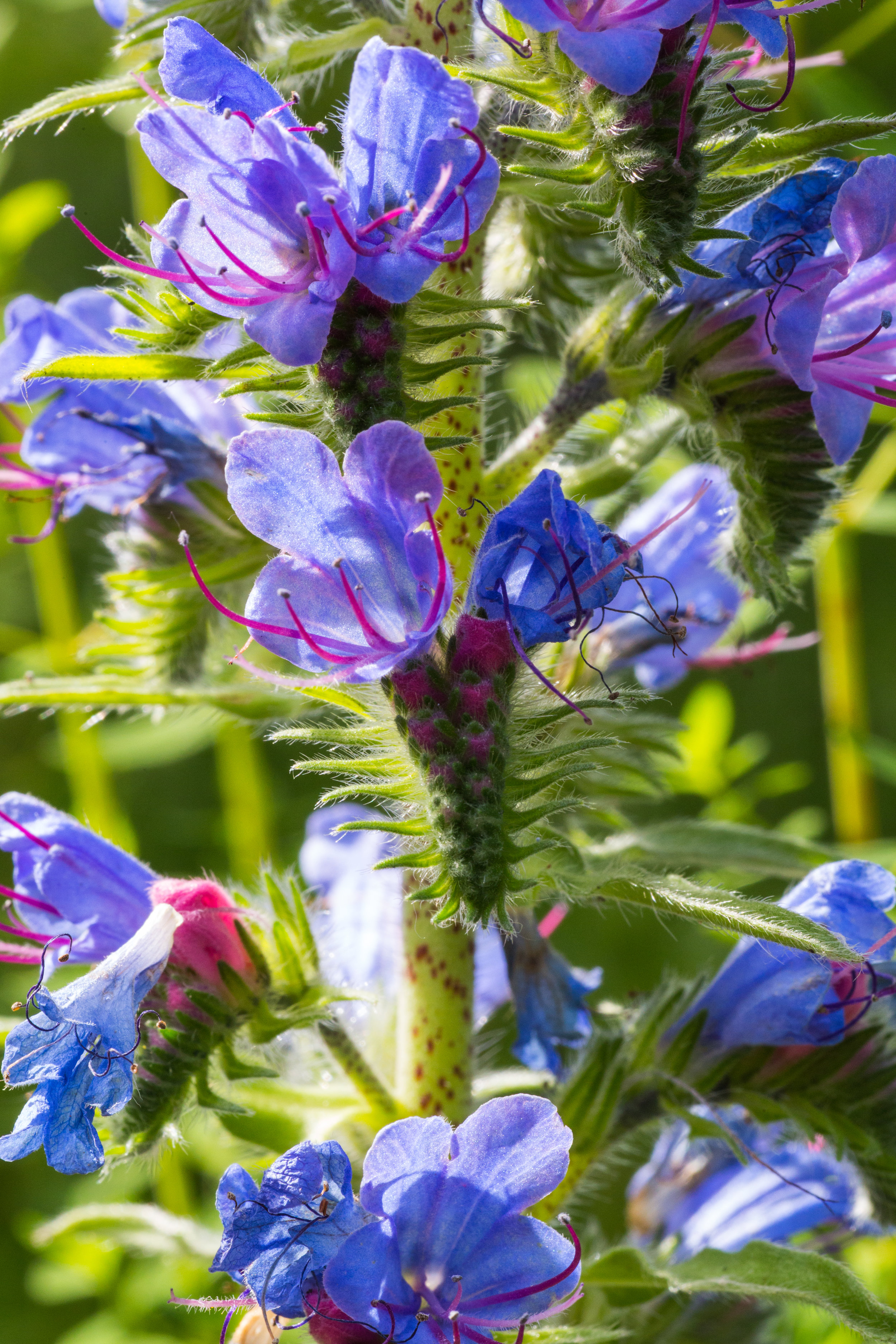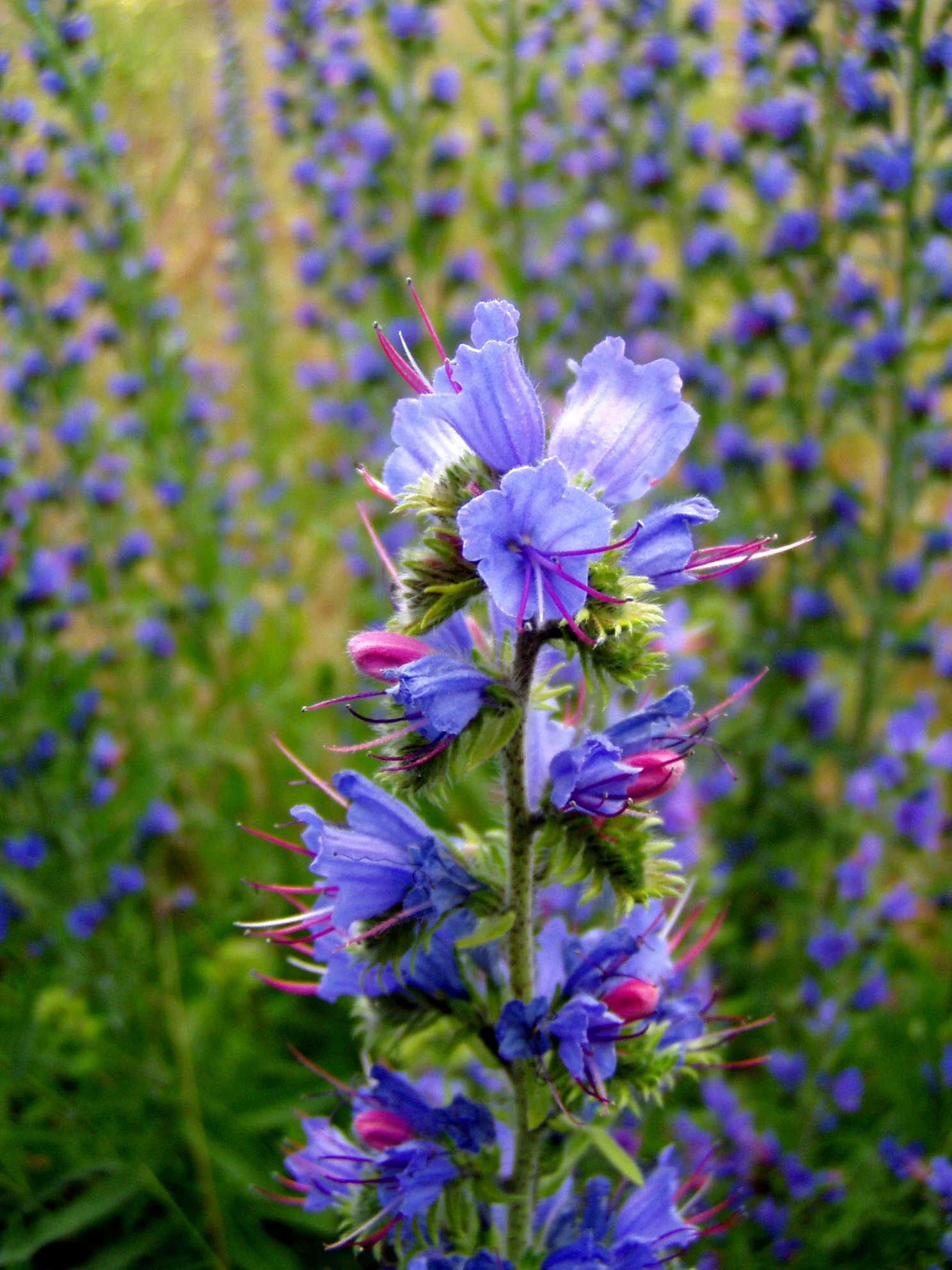Photo by Derek Parker licensed under CC BY-NC-ND 2.0
Throughout much of North America, brown fields, roadsides, and other waste places occasionally take on a wonderful blue hue. Often time the cause of this colorful display is none other than Echium vulgare, or as its commonly referred to, viper's bugloss. Viper’s bugloss is a member of the borage family and was originally native to most of Europe and Asia. However, humans introduced it to North America some time ago. It has since naturalized quite well and is even considered invasive in parts of Washington. No matter your views on this plant, the reproductive ecology of this species is quite interesting.
Viper's bugloss produces its flowers on spikes. Starting off pink and gradually changing to blue as they mature, the flowers ripen their male portions on their first day and ripen their female portions on the second day. This is known as "protandry." Plants that exhibit this lifestyle offer researchers a window into the advantages and disadvantages with regards to the fitness investment of each sex. What they have found in viper's bugloss is that there are clearly distinct strategies for each type of flower.
Male flowers are pollinator limited. They must hedge their bets towards increasing the number of visitors. Bees are the main pollinators of this species and the more bees that visit, the more pollen can be disseminated. Unlike female flowers, which are resource limited, male flowers can produce pollen and nectar quite cheaply. Because of this, male flowers produce significantly more nectar than female flowers to bring in more bees. As the anthers senesce and give way to receptive styles, things begin to change. The plant now has to redirect resources into producing seed. At this point, resources are everything. The plant produces considerably less nectar resources than pollen but the bees can’t know that without visiting.
The other interesting aspect its reproductive ecology has to do with population size. Bees are notorious for favoring plants that are more numerous on the landscape. This makes a lot of sense. Why spend time looking for uncommon plants when they can go for easier, more numerous targets. This can be very detrimental to the fitness of rare plant species. However, plants like viper's bugloss don't seem to fall victim to this.
By looking at large and small populations, researchers found that pollination success pretty much evens out for viper's bugloss no matter how numerous it is in a given area. Large populations receive many more visits from bees but the bees spend less time on each flower. When viper's bugloss populations are small, flowers receive fewer visits but bees spend more time at each flower. This results is no significant difference in the reproductive fitness of either population.
Considering how efficient this plant is reproductively, it is no wonder it has done so well outside of its native range. Add to this its ability to grow in some of the worst soil conditions, it goes without saying that viper's bugloss is here to stay. If you find this species growing, certainly take time to get up close with the flowers. You will be glad you did.

